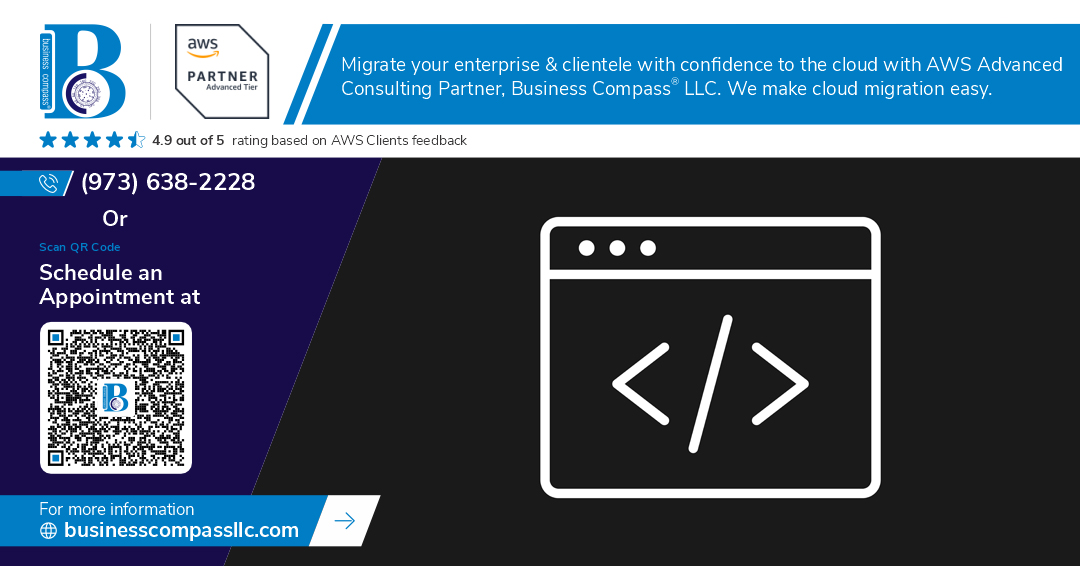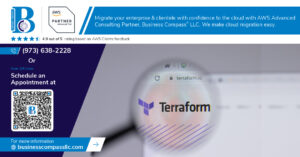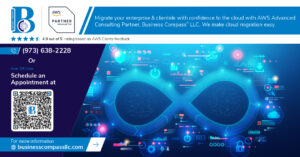Ever stood in front of your monolithic application and felt like you were trying to untangle Christmas lights in the dark? If you’re a developer or architect drowning in a sea of tightly-coupled code, you’re not alone. Thousands of engineering teams hit this wall every year.
I’m about to walk you through real-world service decomposition strategies that actually work – not just theoretical patterns from textbooks.
Breaking up a monolith isn’t just an architectural exercise; it’s about creating systems that can evolve with your business needs without bringing everything down when one part changes.
But here’s the thing most experts won’t tell you: the biggest challenge isn’t technical at all. It’s understanding exactly where to make the first cut.
Understanding Monolithic Architecture Challenges
A. Identifying Pain Points in Large System Maintenance
Every developer who’s worked on a massive monolith knows that sinking feeling. You need to make a simple change, but you’re afraid of breaking something completely unrelated in the process. It’s like performing surgery with oven mitts on.
The most common pain points include:
- Codebase bloat: When your repo takes 30 minutes just to clone
- Cognitive overload: Nobody understands the whole system anymore
- Deployment anxiety: “Who wants to push to production on Friday?”
- Dependency hell: Upgrading one library breaks 17 other modules
These aren’t just annoyances—they’re productivity killers. Teams spend more time fighting the architecture than delivering business value.
B. The Hidden Costs of Scaling Monoliths
The monolith scales until it doesn’t. And when it stops scaling, the costs hit you from all sides:
- Hardware costs spiral as you vertically scale the entire application for one bottleneck
- Dev teams slow to a crawl as merge conflicts become the norm
- Onboarding new developers takes months instead of days
- Testing cycles stretch longer with each release
The real tragedy? Most of these costs don’t show up clearly on any spreadsheet. They hide in delayed features, weekend firefighting, and developer burnout.
C. Recognizing When It’s Time to Decompose
Your monolith is screaming for help when:
- Simple changes require approval from multiple teams
- Release cycles stretch from days to weeks or months
- Your best developers start avoiding certain parts of the codebase
- Production issues take increasingly longer to diagnose
- Teams constantly step on each other’s toes
- Your CI/CD pipeline takes hours to complete
Don’t wait for a catastrophic failure. The best time to start decomposition is when you still have breathing room to do it thoughtfully.
D. Common Failure Patterns in Monolithic Systems
Even well-designed monoliths eventually develop predictable failure patterns:
- The Bottleneck Effect: One overloaded component drags down the entire system
- The Domino Crash: Failures cascade across unrelated components
- The Spaghetti Syndrome: Changes in one area cause unexpected breaks elsewhere
- The Deployment Deadlock: Teams block each other from shipping features
- The Database Chokepoint: A single database becomes the ultimate constraint
These patterns don’t just hurt technically—they cause organizational pain too, often creating siloed teams that point fingers instead of solving problems.
Mapping Your Service Boundaries
Domain-Driven Design for Service Identification
Breaking up your monolith isn’t about drawing random lines through your codebase. It’s about finding the natural seams in your business domain.
Domain-Driven Design (DDD) gives you the perfect toolkit for this. Start by identifying your bounded contexts – those areas of your business that have distinct vocabularies and rules. Each context is a potential microservice candidate.
The magic happens when you map out your domain model with business experts. Grab a whiteboard and sketch out entities, aggregates, and value objects together. Those aggregates? They’re your service boundaries waiting to be discovered.
I’ve seen teams struggle when they skip this step and slice services based purely on technical concerns. Six months later, they’re dealing with a distributed mess that’s worse than their original monolith.
Event Storming: A Practical Workshop Approach
Want to accelerate your domain discovery? Try event storming.
Get everyone in a room – developers, product owners, business folks – with a wall of sticky notes. Map out domain events (orange), commands (blue), aggregates (yellow), and policies (purple) across your business processes.
The clusters that emerge reveal your service boundaries. It’s DDD on steroids.
Here’s what makes it powerful: business stakeholders actually enjoy it. No UML diagrams or technical jargon – just conversations about how business actually works.
I ran this with a financial services client, and in just four hours we identified seven distinct services that had been tangled together for years in their core banking platform.
Proven Decomposition Strategies
A. Strangler Fig Pattern: Gradual Migration Success Stories
The strangler fig pattern isn’t just theory—it’s battle-tested in the trenches. Netflix used this approach when transitioning from their monolithic DVD-rental system to their streaming platform. They didn’t flip a switch overnight. Instead, they gradually replaced components while keeping the system running.
What makes this work? You build new microservices around the existing monolith, slowly redirecting traffic from the old system to the new services. The monolith gets “strangled” without disrupting business operations.
Amazon followed a similar playbook, converting their tangled e-commerce platform piece by piece. The key was patience—they measured progress in years, not months.
B. Seam Identification and Exploitation Techniques
Finding the right seams in your monolith is like discovering fault lines in rock—they’re natural breaking points.
Start by mapping transaction paths through your system. Where do clear handoffs happen? Those are your seams. Tools like distributed tracing can expose these pathways automatically.
Another technique: examine database access patterns. Tables that are always accessed together probably belong in the same service. Tables with little overlap suggest natural service boundaries.
Many teams miss this: look for outdated features or rarely-used code paths. These are perfect first candidates for extraction since the risk is lower.
C. Vertical Slice Implementation for Quick Wins
Vertical slicing cuts through all layers of your application—from UI to database—for specific business capabilities.
Shopify nailed this approach by carving out their product catalog as a complete vertical slice. The beauty? They delivered business value immediately, not after years of refactoring.
The trick is choosing slices that:
- Represent complete business functions
- Have minimal dependencies on other parts
- Can be deployed independently
Start with non-critical business functions to build confidence before tackling core capabilities.
D. API Gateway Approaches for Legacy Integration
API gateways are the secret weapon for smooth transitions. They act as translators between your old monolith and shiny new microservices.
Uber’s engineering team leveraged this technique masterfully. Their gateway handled authentication, routing, and protocol translation while services migrated beneath it—users never noticed the massive architectural overhaul happening behind the scenes.
The most successful implementations:
- Start with a thin gateway layer
- Gradually add routing intelligence
- Implement circuit breakers to protect from cascading failures
- Use traffic shadowing to test new services without risk
Remember: your gateway shouldn’t become a new monolith. Keep it focused on routing and cross-cutting concerns only.
Data Decomposition Challenges Solved
A. Breaking Up Shared Databases
You’re staring at your monolith’s massive database, wondering how on earth you’ll split this beast without bringing down the entire system. Been there.
The key? Incremental decomposition. Start by identifying clear data ownership boundaries. Which service should truly own which tables? This isn’t just a technical decision—it’s about business domains.
Try the Strangler Fig pattern. Instead of a risky big-bang approach, gradually redirect calls to new microservice databases while maintaining the original schema temporarily.
For immediate relief:
- Create data views for each potential service boundary
- Implement API layers on top of the existing database
- Test service-specific queries against these views before cutting over
B. Managing Distributed Transactions
Gone are the days of wrapping everything in a neat ACID transaction. When splitting your monolith’s data, you’ll face the distributed transaction headache.
The truth? Two-phase commits rarely work well in microservices. Instead:
- Embrace the Saga pattern for long-running transactions
- Design compensating transactions for rollbacks
- Use event sourcing to maintain a complete audit trail
One client reduced their transaction failures by 85% by breaking a checkout process into a choreographed saga with clear compensation actions for each step.
C. Implementing Eventual Consistency
Let’s get real—immediate consistency across microservices is often a pipe dream. And guess what? Most business processes don’t actually need it.
Eventual consistency means accepting that, for a short time, your data might be out of sync. The trick is making this transparent to users:
- Design UIs that account for processing states
- Use optimistic UI updates with background synchronization
- Implement robust retry mechanisms with exponential backoff
When implementing eventual consistency:
1. Identify which operations truly need strong consistency
2. Document acceptable consistency delays for other operations
3. Build monitoring tools that track consistency lag
D. Data Migration Patterns That Minimize Risk
Data migration gone wrong can sink your whole decomposition effort. I’ve seen companies literally roll back months of work after botched migrations.
The safest approach combines these patterns:
- Dual-write mechanisms during transition periods
- Read-only replicas for new services to validate behavior
- Feature flags to control cutover timing precisely
- Blue/green deployment for data storage layers
Many teams miss the importance of thorough validation. Set up continuous comparison jobs between old and new data stores to catch discrepancies before they impact users.
E. Handling Reference Data Across Services
Reference data becomes surprisingly complex in a microservice world. That lookup table everyone uses? Now it needs a strategy.
Three viable approaches:
- Duplication: Copy reference data to each service (with clear refresh policies)
- Reference Service: Create a dedicated microservice for shared reference data
- Event-Based Updates: Publish reference data changes as events
The right choice depends on change frequency and business impact. Static data like country codes? Duplicate them. Frequently updated product categories? Consider a reference service with caching.
Smart teams implement monitoring that alerts when reference data diverges between services—catching data integrity issues before users do.
Real-World Case Studies
A. Financial Industry: Payment Processing Decomposition
The banking world isn’t known for cutting-edge tech moves, but when a major US financial institution was drowning in their legacy payment system, they had no choice. Their monolith was a 15-year-old behemoth handling everything from ACH transfers to wire payments and credit card processing.
Their approach? They didn’t boil the ocean. Instead, they identified the most troublesome pain point: international wire transfers that were causing customer complaints and compliance headaches.
The team mapped domain boundaries using event storming sessions where actual operations staff, not just architects, participated. They carved out the international payments service first, using the strangler pattern to gradually redirect traffic from the monolith.
Results were striking:
- Release cycles dropped from 6 months to 2 weeks
- Compliance updates now take hours instead of weeks
- 67% reduction in international wire processing errors
- Scaling costs reduced by 40% during peak periods
B. E-commerce Platform Transformation Journey
An online retailer with $500M in annual sales was stuck with a monolith built when flip phones were still cool. Black Friday would reliably crash their system, and adding new features was like performing surgery blindfolded.
Their decomposition wasn’t fancy – it was brutally practical. They started with inventory management since stock accuracy was killing customer satisfaction.
“We were making horrible trade-offs between system performance and accurate inventory data,” their CTO admitted.
Their approach combined:
- Bounded context mapping to identify clear service boundaries
- Data duplication where necessary with eventual consistency patterns
- API gateway implementation to handle legacy system communication
The inventory service migration took 4 months, but once completed, they followed with order processing, user profiles, and recommendations in rapid succession.
C. Healthcare System Modernization Results
A healthcare provider managing 12 hospitals faced a monster: a patient management system that physicians hated and IT couldn’t update without breaking something else.
Their decomposition focused on patient data access first – the most critical and performance-sensitive component. The team used domain-driven design to identify aggregate boundaries, creating a patient profile service with strict data ownership rules.
The technical approach included:
- CQRS pattern implementation for optimized read/write operations
- Event sourcing to maintain complete patient history
- Careful data migration with dual-write periods to ensure accuracy
Three years into their journey, they’ve decomposed 60% of their monolith. Emergency room wait times dropped 23% thanks to better system performance, and physician satisfaction scores with technology jumped from 2.1/10 to 7.8/10.
Technical Implementation Roadmaps
A. Containerization as an Enabler
Breaking up that monolith? Containerization isn’t just nice-to-have—it’s practically essential. Docker and Kubernetes give you the isolation needed when splitting services, making each microservice truly independent.
Think about it: containers package everything your service needs—code, runtime, system tools—in one neat bundle. This means your payment service won’t suddenly break when your inventory team changes their environment.
$ docker build -t payment-service .
$ docker run -p 8080:8080 payment-service
No more “but it works on my machine” drama. Your services run consistently everywhere.
B. CI/CD Pipeline Adjustments for Microservices
Your old monolith CI/CD pipeline? Yeah, that’s not gonna cut it anymore.
Microservices need pipelines that can:
- Build and deploy individual services independently
- Handle parallel development streams
- Deploy without bringing down the whole system
The game-changer here is setting up service-specific pipelines. Each team owns their pipeline, deploys on their schedule.
GitHub Actions or Jenkins with multiple job configurations work great:
jobs:
user-service:
if: contains(github.event.head_commit.message, 'user-service')
runs-on: ubuntu-latest
steps:
# User service-specific steps
C. Monitoring and Observability Requirements
When your monolith breaks into 15+ services, you’ll quickly discover that monitoring becomes exponentially more complex.
You need:
- Distributed tracing (Jaeger, Zipkin)
- Centralized logging (ELK stack, Graylog)
- Service mesh technologies (Istio, Linkerd)
- Health metrics dashboards (Grafana)
The key difference? In a monolith, you track one application. In microservices, you’re tracking complex request flows across multiple services.
User request → API Gateway → Auth Service → User Service → Notification Service
Each hop needs visibility. Without proper observability tools, troubleshooting becomes a nightmare.
D. Security Considerations in Distributed Architectures
Your security approach needs a complete overhaul when moving to microservices. The attack surface expands dramatically.
Consider:
- Service-to-service authentication (mTLS)
- API gateways with rate limiting
- Secret management solutions (HashiCorp Vault)
- Network security policies at the container level
Zero-trust security models shine here. Every service must authenticate with every other service—no free passes in your network.
Remember that each microservice potentially exposes new endpoints. What worked for your monolith won’t scale in this new world.
Team and Organization Adaptations
A. Transitioning from Project to Product Teams
Breaking monoliths isn’t just a tech problem—it’s a people problem too. When you’re shifting to microservices, your team structure needs a major overhaul.
Project teams (remember those?) are built around temporary milestones and then disband. That approach just doesn’t cut it anymore. In a microservice world, you need long-term ownership and continuity.
Product teams take a different approach:
- They own specific services end-to-end
- They stick around for the long haul
- They deeply understand their domain
This transition hits hard. Developers who once worked across the entire monolith now need to become domain specialists. Managers who tracked project completion dates now need to think about ongoing service health metrics.
B. Building Cross-Functional Capabilities
Gone are the days when you could toss code over the wall to ops. Each product team now needs a mini version of what the entire org used to have.
Your teams need to develop muscles they didn’t have before:
- Backend devs learning infrastructure-as-code
- Frontend specialists understanding API design
- Everyone getting comfortable with observability tools
The payoff? Teams that can move independently without constant handoffs. When the database team isn’t a bottleneck for every service change, you’ll know you’re on the right track.
C. Evolving DevOps Practices for Service Ownership
The “you build it, you run it” mantra becomes non-negotiable with microservices.
Your DevOps evolution needs to include:
- Distributed on-call rotations tied to service ownership
- Automated deployment pipelines for each service
- Team-specific monitoring dashboards
- Clear incident management protocols
Teams often struggle here because monitoring ten services is fundamentally different from monitoring one monolith. You need aggregated logging, distributed tracing, and service maps just to understand what’s happening.
D. Communication Patterns for Distributed Teams
When your system becomes distributed, your communication patterns must adapt too.
The old standby of “let’s get everyone in a room” stops working when decisions need to happen across dozens of teams. Instead, you need:
- Asynchronous decision-making frameworks
- Clear API contracts as communication boundaries
- Service catalogs showing who owns what
- Regular cross-team architecture reviews
The most successful organizations develop a balance—strong team autonomy with lightweight coordination mechanisms that prevent chaos. Without this balance, you’ll just trade monolithic code for monolithic decision-making.
The journey from monolithic architecture to microservices isn’t just a technical transition—it’s a strategic evolution that transforms both your codebase and organization. By mapping service boundaries based on business domains, implementing proven decomposition patterns, and addressing data challenges head-on, teams can successfully break free from the limitations of monolithic systems. The real-world case studies and implementation roadmaps we’ve explored demonstrate that this transformation, while challenging, delivers substantial benefits in scalability, developer productivity, and business agility.
Remember that successful service decomposition requires more than just technical expertise—it demands organizational adaptation. As your architecture evolves, so must your teams, processes, and culture. Start with small, incremental changes, measure your progress, and be prepared to adjust your approach based on what you learn. Whether you’re just beginning your microservices journey or refining your existing distributed architecture, the strategies outlined here provide a practical foundation for building systems that can evolve with your business needs.



















